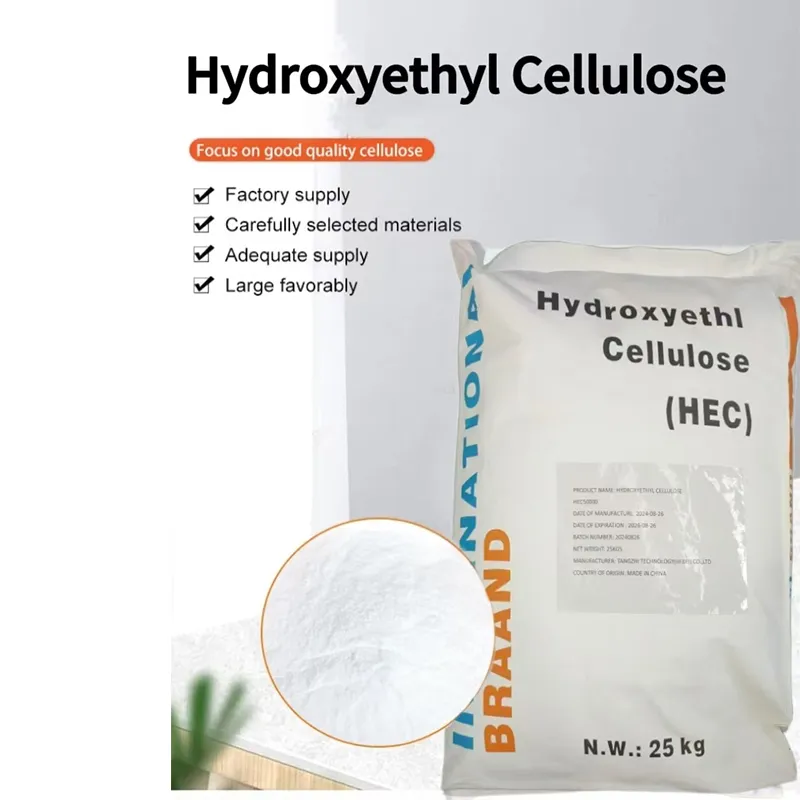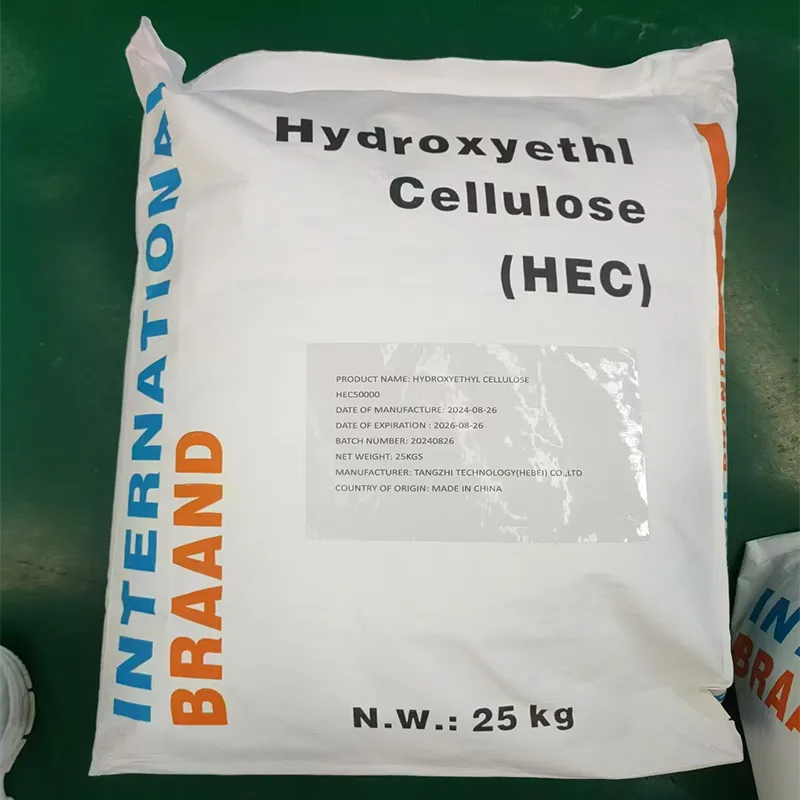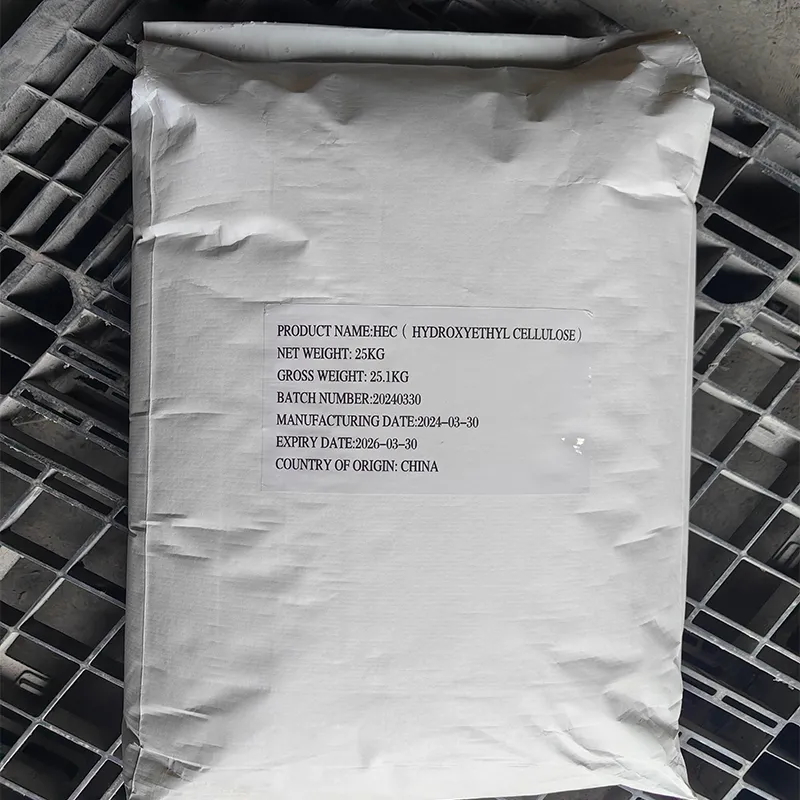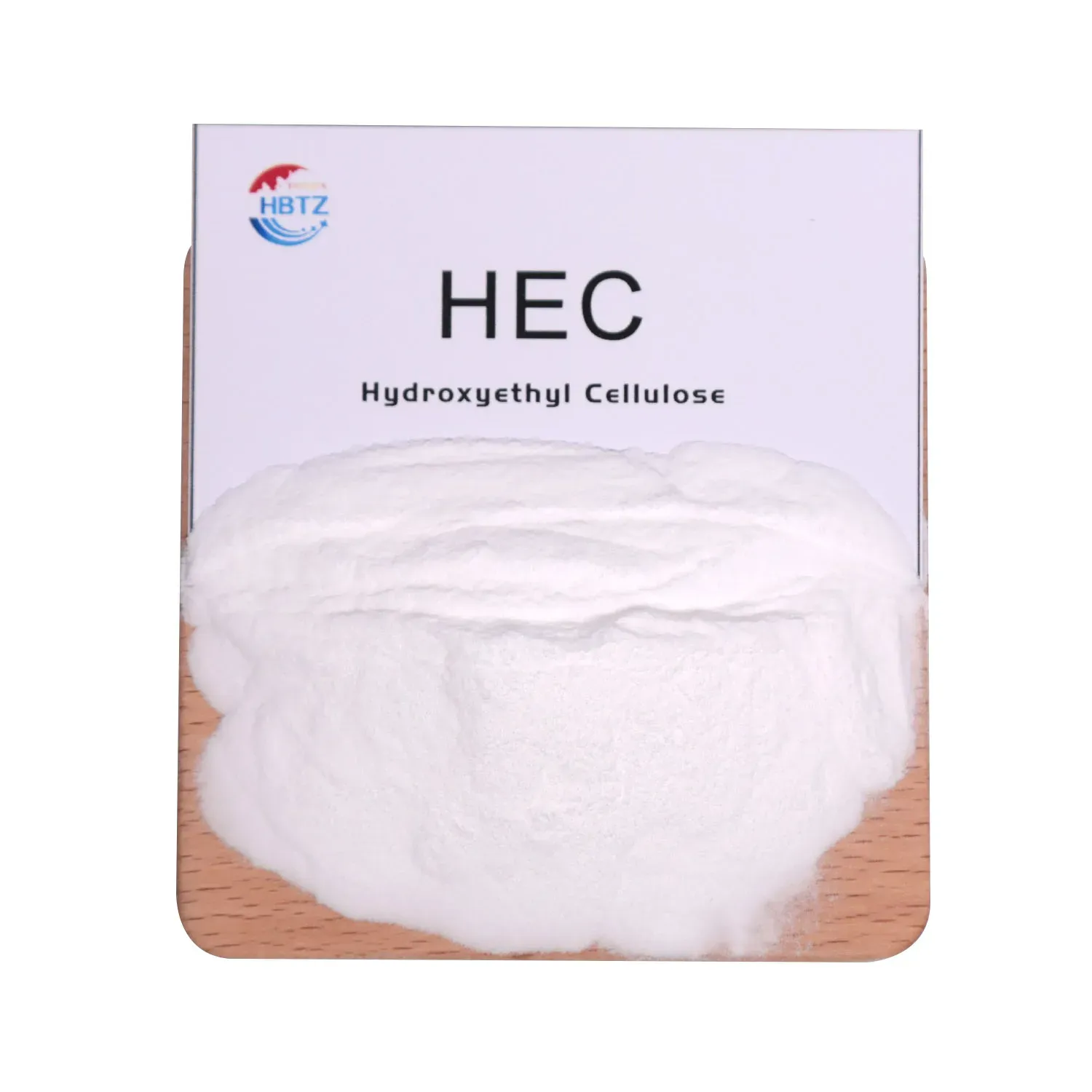
Hydroxyethyl Cellulose for Paint: Optimal Thickening & Flow Control
The Pivotal Role of Hydroxyethyl Cellulose in Advanced Paint Formulations
In the dynamic world of coatings, the performance of a paint formulation is intrinsically linked to the efficacy of its additives. Among these, hydroxyethyl cellulose for paint stands out as a crucial rheology modifier, thickener, and stabilizer. This technical exploration delves into the multifaceted aspects of HEC, from its intricate manufacturing process and diverse applications to its profound technical advantages and market trends, aiming to equip B2B decision-makers and engineers with comprehensive insights into this indispensable polymer.
Our focus is on providing a detailed understanding that encompasses not just the "what" but also the "how" and "why" of HEC's unparalleled contribution to modern paint systems. We will explore its role in enhancing key properties such as sag resistance, leveling, and pigment dispersion, all critical for achieving high-quality, durable, and aesthetically pleasing coatings.
Manufacturing Process: Crafting Hydroxyethyl Cellulose for Paint
The production of hydroxyethyl cellulose for paint is a sophisticated chemical process that transforms natural cellulose into a highly versatile water-soluble polymer. Understanding this process is key to appreciating the quality and consistency of the final product. The primary raw material is purified cellulose, typically derived from wood pulp or cotton linters.
Detailed Process Flow:
- Cellulose Alkalization: Highly purified cellulose is steeped in a concentrated solution of caustic soda (NaOH). This process swells the cellulose fibers, converting them into alkali cellulose, which is more reactive due to the formation of alkalized hydroxyl groups. The temperature and concentration are meticulously controlled to ensure uniform reaction and prevent degradation.
- Etherification: The alkali cellulose is then reacted with ethylene oxide (EO) in a specialized reactor under carefully controlled temperature and pressure. Ethylene oxide reacts with the hydroxyl groups of the cellulose polymer, forming hydroxyethyl groups. The degree of substitution (DS) and molar substitution (MS) are critical parameters controlled at this stage, dictating the solubility and viscosity characteristics of the final HEC. Higher MS generally leads to better water solubility and lower gelation temperatures.
- Neutralization & Washing: After etherification, the reaction mixture is neutralized with an acid (e.g., acetic acid) to achieve a desired pH. The crude HEC is then extensively washed with hot water to remove by-products such as salts and unreacted chemicals, ensuring a high purity product. This washing phase is crucial for product stability and performance in sensitive applications like paint.
- Drying & Grinding: The purified HEC is dried to a specific moisture content, typically using flash dryers or tray dryers. After drying, the material is pulverized and milled to achieve the desired particle size distribution. Fine control over particle size is essential for rapid dissolution and lump-free dispersion in paint formulations.
- Quality Control & Packaging: Throughout the entire process, rigorous testing standards are applied, including ISO 9001 and often specific industry standards. Parameters such as viscosity (measured by Brookfield viscometer), pH, moisture content, particle size, and solution clarity are continuously monitored. Only products meeting stringent specifications are packaged, often in multi-ply paper bags with an inner polyethylene liner, ensuring product integrity and a long service life under proper storage conditions.
**Target Industries:** HEC produced via this process finds its way into various sectors beyond paint, including petrochemical (for drilling fluids), construction (for tile adhesives and renders), personal care, pharmaceuticals, and textile industries.
**Advantages in Typical Application Scenarios:** In paint, the consistent quality derived from this process ensures energy saving through optimized mixing and pumping properties, and contributes to improved film formation, indirectly enhancing corrosion resistance and overall durability of the coating. The precise control over viscosity allows paint manufacturers to achieve desired rheology with minimal additive usage.
Industry Trends and Market Dynamics for HEC in Coatings
The market for hydroxyethyl cellulose for paint is continuously evolving, driven by global megatrends. Increasing urbanization, infrastructure development, and growing demand for residential and commercial spaces are fueling the construction sector, directly boosting the need for high-performance coatings.
- Sustainability Push: There is a significant global shift towards environmentally friendly coatings. This translates into a higher demand for water-based, low-VOC (Volatile Organic Compound) formulations, where HEC is a preferred rheology modifier due to its aqueous solubility and non-toxic profile. This trend directly supports the growth of hydroxyethylcellulose based products.
- Performance Enhancement: End-users are increasingly demanding paints with superior properties – better scrub resistance, longer durability, enhanced aesthetic appeal, and easier application. HEC plays a crucial role in delivering these attributes by improving paint consistency, film build, and overall finish.
- Emerging Markets: Rapid industrialization and construction booms in Asia-Pacific, Latin America, and Africa are creating vast new opportunities for HEC suppliers. These regions represent significant growth potential for those looking to buy hydroxyethyl cellulose.
- Specialty Grades: The market is seeing an increased demand for specialty HEC grades designed for specific applications, such as high-shear stability HEC for industrial coatings or improved biostability HEC for exterior paints.
These trends highlight the critical need for suppliers to offer a diverse range of HEC products and maintain robust supply chains to meet global demand, signaling a strong market for hydroxyethylcellulose for sale.
Technical Specifications and Product Parameters
The performance of hydroxyethyl cellulose for paint is largely defined by its precise technical specifications. These parameters dictate how HEC will interact within complex paint formulations, influencing everything from application properties to final film quality. Key specifications include viscosity, degree of substitution (DS), molar substitution (MS), pH, moisture content, and particle size.
Representative HEC Product Specifications
| Parameter | Unit | Standard Grade (e.g., HEC-M50000) | High Viscosity Grade (e.g., HEC-H100000) |
|---|---|---|---|
| Viscosity (2% Solution, Brookfield, 25°C) | mPa·s | 40,000 - 60,000 | 80,000 - 120,000 |
| Molar Substitution (MS) | - | 1.8 - 2.5 | 2.0 - 3.0 |
| pH (2% Solution) | - | 6.0 - 8.0 | 6.0 - 8.0 |
| Moisture Content | % | ≤ 5.0 | ≤ 5.0 |
| Ash Content | % | ≤ 2.0 | ≤ 2.0 |
| Particle Size (>100 mesh) | % | ≥ 98 | ≥ 98 |
| CAS Number | - | **Hydroxyethyl Cellulose CAS Number: 9004-62-0** | |
These specifications are critical for paint formulators to select the appropriate grade of HEC for their specific applications, ensuring optimal rheological performance, stability, and overall quality of the final paint product. The precise control over Molar Substitution (MS) is particularly important as it dictates hydrophilicity and enzymatic resistance, crucial for the long-term stability of water-based paints.
Application Scenarios for Hydroxyethyl Cellulose in Paint
Hydroxyethyl cellulose for paint is an indispensable additive across a wide spectrum of coating applications due to its multifunctional properties. Its primary roles include acting as a highly efficient thickener, a protective colloid, a rheology modifier, and a stabilizer.
Specific Paint Types and Their Benefits:
- Latex and Emulsion Paints: HEC is most commonly used here. It provides excellent thickening, preventing pigment settling and ensuring uniform consistency. It also imparts pseudoplasticity, meaning the paint thins under shear (brushing/rolling) and recovers its viscosity quickly, preventing drips and improving leveling.
- Architectural Coatings: For interior and exterior wall paints, HEC improves open time, enhances scrub resistance, and contributes to better film build, providing a more uniform and durable finish. It also aids in preventing spatter during application.
- Industrial Coatings: In certain water-borne industrial formulations, HEC can be used to control rheology, improving application characteristics for spray or dip coatings, and ensuring uniform film thickness, which is crucial for protective functions like corrosion resistance.
- Textured Paints: HEC helps maintain the structural integrity of textured finishes, preventing sagging and ensuring the desired texture pattern is retained during and after application.
- Tint Bases: It ensures color stability and tint strength by keeping pigments well-dispersed, leading to consistent color development across batches.

Figure 1: HEC's role in improving rheology for diverse paint applications.
The versatility of HEC allows formulators to fine-tune paint properties, achieving optimal balance between ease of application, stability during storage, and the final aesthetic and protective qualities of the coating. This makes it an indispensable component in the modern paint industry.
Key Technical Advantages of Hydroxyethyl Cellulose for Paint
The choice of rheology modifier significantly impacts paint performance. Hydroxyethyl cellulose for paint offers a suite of technical advantages that make it a preferred choice for high-quality formulations:
- High Thickening Efficiency: HEC provides excellent thickening at low concentrations, making it cost-effective and minimizing impact on other paint properties. Its efficient molecular entanglement contributes significantly to build viscosity.
- Pseudoplasticity (Shear-Thinning): This critical property allows paints to thin under shear stress (brushing, rolling, spraying), making them easy to apply. Once the shear is removed, the viscosity recovers quickly, preventing sag and improving film build, leading to an even coating without drips.
- Excellent Water Retention: HEC's superior water retention capability ensures a longer open time for paints, allowing for smoother application and better wet-edge formation. This is particularly beneficial in hot or dry climates, preventing premature drying.
- Good Color Acceptance and Tint Strength: HEC functions as a protective colloid for pigment particles, preventing flocculation and ensuring uniform dispersion. This results in consistent color development and high tint strength, crucial for aesthetic quality.
- Broad Compatibility: HEC exhibits good compatibility with various paint components, including binders, surfactants, and other additives, ensuring formulation flexibility and stability.
- Enhanced Film Formation: By controlling rheology, HEC facilitates uniform film formation, which can contribute to improved physical properties of the dried film, such as scratch resistance and adhesion. For protective coatings, this translates to better corrosion resistance and longer service life.
- Biostability (Special Grades): Certain HEC grades offer enhanced resistance to microbial degradation, which is vital for the long-term integrity and shelf life of water-based paint systems.
- Energy Saving: Optimized rheology reduces the energy required for mixing, pumping, and applying paints, contributing to operational efficiencies for manufacturers and applicators.
These advantages underscore HEC's role not just as an additive, but as a performance enhancer that delivers tangible benefits across the entire lifecycle of a paint product, from manufacturing to application and long-term durability.
Vendor Comparison and Selection Criteria for Hydroxyethyl Cellulose
When looking to buy hydroxyethyl cellulose, selecting the right vendor is paramount for consistent product quality and reliable supply. The market offers various suppliers of hydroxyethylcellulose for sale, and a thorough evaluation process is essential for B2B procurement.
Key Vendor Comparison Criteria:
| Criterion | Importance | Description / Key Considerations |
|---|---|---|
| Product Quality & Consistency | Critical | Viscosity, purity, particle size. Batch-to-batch consistency is crucial for paint formulation reliability. Request COAs and samples. |
| Technical Support & Expertise | High | Ability to provide formulation guidance, troubleshooting, and customized solutions. Access to R&D teams. |
| Supply Chain Reliability | Critical | On-time delivery, inventory management, global distribution network, contingency plans. |
| Certifications & Compliance | High | ISO 9001, ISO 14001, REACH compliance, potentially FDA/Food-grade if applicable to specific segments of HEC use. |
| Customization Capabilities | Medium-High | Ability to tailor HEC grades to unique paint formulation requirements (e.g., specific viscosity range, dissolution rate). |
| Pricing & Payment Terms | Important | Competitive pricing, flexible payment options, volume discounts. Balanced against quality and service. |
| Sustainability Practices | Growing | Environmental initiatives, waste reduction, responsible sourcing of cellulose. |

Figure 2: Quality control in HEC production ensures consistent paint performance.
A reliable supplier not only provides a high-quality product but also acts as a strategic partner, offering expertise and support that can optimize your paint production and formulation development. Evaluating these criteria thoroughly ensures a secure and beneficial long-term partnership.
Customized Solutions with Hydroxyethyl Cellulose
The diverse and often unique requirements of modern paint formulations necessitate flexible and tailored additive solutions. While standard grades of hydroxyethyl cellulose for paint address a broad range of needs, specialized applications or challenging formulations often benefit significantly from customized HEC solutions.
Customization typically involves adjusting key parameters during the manufacturing process to fine-tune HEC's properties. This can include:
- Viscosity Range: Developing HEC with a very specific, narrow viscosity range to meet stringent rheological targets for high-end or specialty coatings.
- Dissolution Rate: Modifying the surface treatment or particle size distribution to achieve faster or slower dissolution rates, optimizing for specific mixing equipment or formulation steps.
- Biostability: Enhancing resistance to enzymatic degradation for paints destined for humid environments or prolonged storage, ensuring long-term viscosity stability.
- Salt Tolerance: Developing grades that maintain performance in high-electrolyte paint systems, which can be challenging for standard HEC.
- Compatibility with Other Additives: Ensuring optimal interaction with specific binders, dispersants, or defoamers unique to a customer's formulation.
Leading manufacturers engage in collaborative R&D with clients, leveraging their technical expertise and state-of-the-art laboratory facilities. This technical consultation ensures that the tailored HEC product seamlessly integrates into the client's existing processes and meets the desired performance benchmarks, often resulting in significant improvements in final product quality and operational efficiency. This proactive approach underscores the value of partnership in the B2B chemical supply chain.
Application Case Studies: HEC in Action
Real-world application demonstrates the tangible benefits of optimizing hydroxyethyl cellulose for paint. These case studies highlight how tailored HEC solutions address specific formulation challenges and deliver superior performance.
Case Study 1: Enhanced Sag Resistance in High-Build Coatings
A manufacturer of protective industrial coatings struggled with sag resistance in their high-build, water-borne epoxy system, especially when applied to vertical surfaces. The previous rheology modifier led to uneven film thickness and aesthetic defects.
- Challenge: Maintain high film build on vertical substrates without sagging.
- Solution: Collaborated with a HEC supplier to develop a specialized, high-viscosity HEC grade with optimized pseudoplasticity. This HEC was designed for a rapid viscosity recovery after shear.
- Result: The new formulation achieved a 30% increase in critical sag film thickness (ASTM D4400) and a 15% reduction in application defects, leading to significant material savings and improved product quality. Customer feedback reported easier application and superior finish.
Case Study 2: Improved Tint Strength and Color Consistency
An architectural paint brand faced challenges with color variability and reduced tint strength in their pastel emulsion paints, particularly when using organic pigments. This resulted in customer complaints and batch reprocessing.
- Challenge: Achieve consistent tint strength and minimize color variation in tinted paints.
- Solution: Integrated a specific HEC grade known for its excellent protective colloid properties and superior pigment dispersion capabilities. This grade ensured that pigment particles remained uniformly dispersed, preventing agglomeration.
- Result: The tint strength increased by 10-12% (measured by reflectance spectroscopy), and color deviation between batches was reduced by 25% (ΔE values). This led to higher customer satisfaction and a substantial reduction in waste from off-spec batches.

Figure 3: High-build paint with superior sag resistance thanks to advanced HEC.
These instances underscore the critical role of HEC in overcoming complex paint formulation challenges, demonstrating its ability to deliver both technical performance and significant commercial benefits.
Ensuring Trustworthiness: Our Commitment and Support
Trust is foundational in B2B relationships. Our commitment to quality, reliability, and customer satisfaction for hydroxyethyl cellulose for paint is enshrined in our operational ethos.
Certifications and Authoritative References:
Our manufacturing facilities adhere to stringent international quality management systems, including ISO 9001:2015 for quality and ISO 14001:2015 for environmental management. Our products are also compliant with global regulatory standards such as REACH (Registration, Evaluation, Authorisation and Restriction of Chemicals) for the European market. The consistent quality and performance of our HEC are verified through rigorous internal testing and independent third-party assessments, ensuring every batch meets the high standards expected by our partners. The specific hydroxyethyl cellulose CAS number (9004-62-0) is consistently referenced in our documentation, providing clear chemical identity and facilitating regulatory compliance.
Frequently Asked Questions (FAQ):
Q: What is the recommended storage condition for HEC?
A: HEC should be stored in a cool, dry place, away from direct sunlight and moisture, in its original sealed packaging. Under these conditions, it typically has a shelf life of 12-24 months.
Q: How does HEC contribute to sustainability in paint?
A: As a bio-based polymer derived from cellulose, HEC is inherently more sustainable than synthetic alternatives. Its use enables water-based, low-VOC paint formulations, aligning with environmental regulations and green building standards.
Q: Can HEC be used in paints with high pH or strong electrolyte content?
A: While standard HEC performs well in a wide pH range, for very high pH or high electrolyte content, specific modified HEC grades may be required. We offer specialized grades engineered for enhanced stability under such conditions, and our technical team can provide tailored recommendations.
Lead Time and Fulfillment:
We maintain a robust supply chain and optimized logistics to ensure timely delivery of hydroxyethylcellulose for sale. Standard lead times typically range from 7 to 14 business days, depending on order volume and destination. Expedited shipping options are available upon request. Our dedicated customer service team provides real-time order tracking and proactive communication on fulfillment status.
Warranty Commitments:
All our HEC products come with a comprehensive quality warranty, guaranteeing that they meet or exceed the stated technical specifications. In the unlikely event of a product not meeting agreed-upon standards, we are committed to prompt investigation, replacement, or appropriate compensation, ensuring minimal disruption to your operations.
Customer Support and After-Sales Service:
Our commitment extends beyond product delivery. Our experienced technical support team is readily available to assist with product selection, formulation optimization, troubleshooting, and application guidance. We offer continuous after-sales support to ensure you maximize the value of our hydroxyethylcellulose based solutions.

Figure 4: Our team is dedicated to providing superior technical support.
Conclusion
Hydroxyethyl cellulose for paint remains a cornerstone additive, underpinning the performance and aesthetic quality of a vast array of coatings. Its unique rheological properties, combined with its versatility and compatibility, make it indispensable for achieving critical performance attributes such as sag resistance, leveling, and color consistency. As the coatings industry continues its trajectory towards more sustainable and high-performance solutions, the role of HEC, particularly specialized and customized grades, will only grow in importance. Partnering with a knowledgeable and reliable supplier who prioritizes quality, technical support, and comprehensive service is crucial for harnessing the full potential of HEC in your paint formulations.
Authoritative References
- Encyclopedia of Polymer Science and Technology, "Cellulose Ethers," John Wiley & Sons.
- Handbook of Industrial Water Treatment, "Polymers and Polyelectrolytes," McGraw-Hill Education.
- Paint and Coating Testing Manual, "Rheological Properties of Coatings," ASTM International.
- Ullmann's Encyclopedia of Industrial Chemistry, "Cellulose Ethers," Wiley-VCH Verlag GmbH & Co. KGaA.
- American Chemical Society, Journal of Applied Polymer Science, various articles on cellulose derivatives.
-
Reliable Powdered Cellulose Supplier: Quality, Sustainability & InnovationNewsNov.24,2025
-
Find Trusted Microfibrillated Cellulose Suppliers for Sustainable Industrial SolutionsNewsNov.24,2025
-
Leading Methocel Suppliers: Quality, Innovation & Sustainability in Methylcellulose SupplyNewsNov.23,2025
-
Reliable Hydroxyethylcellulose Suppliers for Industry & Sustainability | Tangzhi HPMCNewsNov.23,2025
-
Top Ethyl Cellulose Supplier – Quality, Sustainability, and Industrial SupportNewsNov.23,2025
-
Trusted CMC Powder Suppliers for Food, Pharma & Industrial Use | Tangzhi HPMCNewsNov.22,2025





















